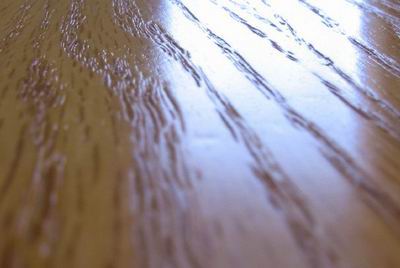Wash Coats for Maple
More thoughts on sealing maple to allow even staining. April 19, 2006
Question
I am staining some maple plywood a dark red and want an even tone. My Campbell
rep suggested I use a clear stain base first, then stain. I applied the clear stain and let it soak in for 1/2 hour, then wiped with a clean rag. After applying the red stain and wiping off, I am still getting a lot of blotching. I have read in other posts about using a wash coat of Krystal to condition the wood. Is this a better way than the clear stain? Its seems they should both do the same thing, or am I doing something wrong?
Forum Responses
(Finishing Forum)
From contributor J:
Maple is a pain to stain, but that's all my customers seem to want lately. Try Zinsser Seal Coat (dewaxed shellac) reduced to about 5% solids. That's pretty close to two parts denatured alcohol to 1 part seal coat. Sand with 220, 320, etc., then stain. Play with it a little bit if you don't get the effect you're looking for. The Zinsser data sheet recommends a ratio of three parts alcohol to two parts seal coat as a wash coat. I use that ratio when I'm dealing with a lot of end grain and trying to keep it from darkening. Paul Snyder has a great article at the link below that deals with this subject.
Related article: How to Prevent Blotching Using a Washcoat
From contributor M:
Two other options are: Apply a coat of boiled linseed oil, allow to dwell for 10 minutes, wipe off, and then allow to dry. Use a white glue sizing, which is 50% water + 50% white glue, mix well. Brush it on, allow to dry, then repeat to be sure you covered the entire surface, then allow to dry. Glue sizing is a transparent barrier coat.
From contributor J:
I forgot to mention that I'm having better luck with Transtint dye on maple than I am solvent or water based stain. It tends to blotch less and gives a smoother appearance. Jeff Jewitt makes this stuff and sells it through his web site at Homesteadfinishing.com. He or his wife answer the phone most of the time. It's cool to get to talk with a guy like him.
I've been waiting for the right opportunity to try the BLO. I understand it pops the grain with soft maple and makes an otherwise blah wood come alive. Is that true? Also, how long does it take the oil to dry so you can stain/topcoat?
From contributor M:
1) It adds a tint of color.
2) It acts as a sealer, and is a reactive coating.
3) It's best to allow for overnight drying, but in most cases depending on ambient shop conditions, 4 hours to stain (mist on first coats).
From contributor J:
Thanks. I'll let you know how I make out with that when I try the BLO. I've never used glue size either but have heard good things about that too. I hear that's the best thing to use when you want to seal the raw ends of plywood to keep it from absorbing moisture.
From contributor C:
Isn't the mix for glue size 10 : 1 water and white glue? I would think 50/50 would make for a lot of glue on the surface. I love to stain maple now that I use dye stains. I spray it on and that's it. No wiping or anything. As long as you use the exact technique for each piece, the color is very consistent throughout the job. I did use up a lot of sample doors getting my technique right, but I think it was worth it, as most of my work is currently maple also. I am using the Transtint dyes and I thin them in a 50/50 mix of alcohol and lacquer thinner. Dries in like 1 minute.
From contributor D:
I have traditionally used a 2% solids vinyl as a washcoat for maple. I have, however, used a clear glaze as a pre-stain sealer... with great success. This works the best with a wipe stain, rather than a spray stain.
From contributor J:
Contributor C, did you seal those doors in any way before you put the dye on? I've been experimenting with the dyes (on soft maple) without pre-sealing and the colors have been pretty consistent. The only place I was not satisfied was on the end grain. I sanded the flats through 220 and went up to 400 on the end grain. It still got too dark. Otherwise, there was not nearly as much splotching as with solvent or water based stains. I wouldn't consider putting that stuff on maple without presealing first.
From contributor M:
If the wood is closed grained, then you can use a 25% white glue to 75% water. On the close grained woods, I then use the 50/50 formula because I want to be sure I completely seal up the wood. Whichever formula you decide to use, you must be sure that you seal the entire surface and that there are no skips or holidays so the solvent in the coatings cannot get under your thin glue film.
